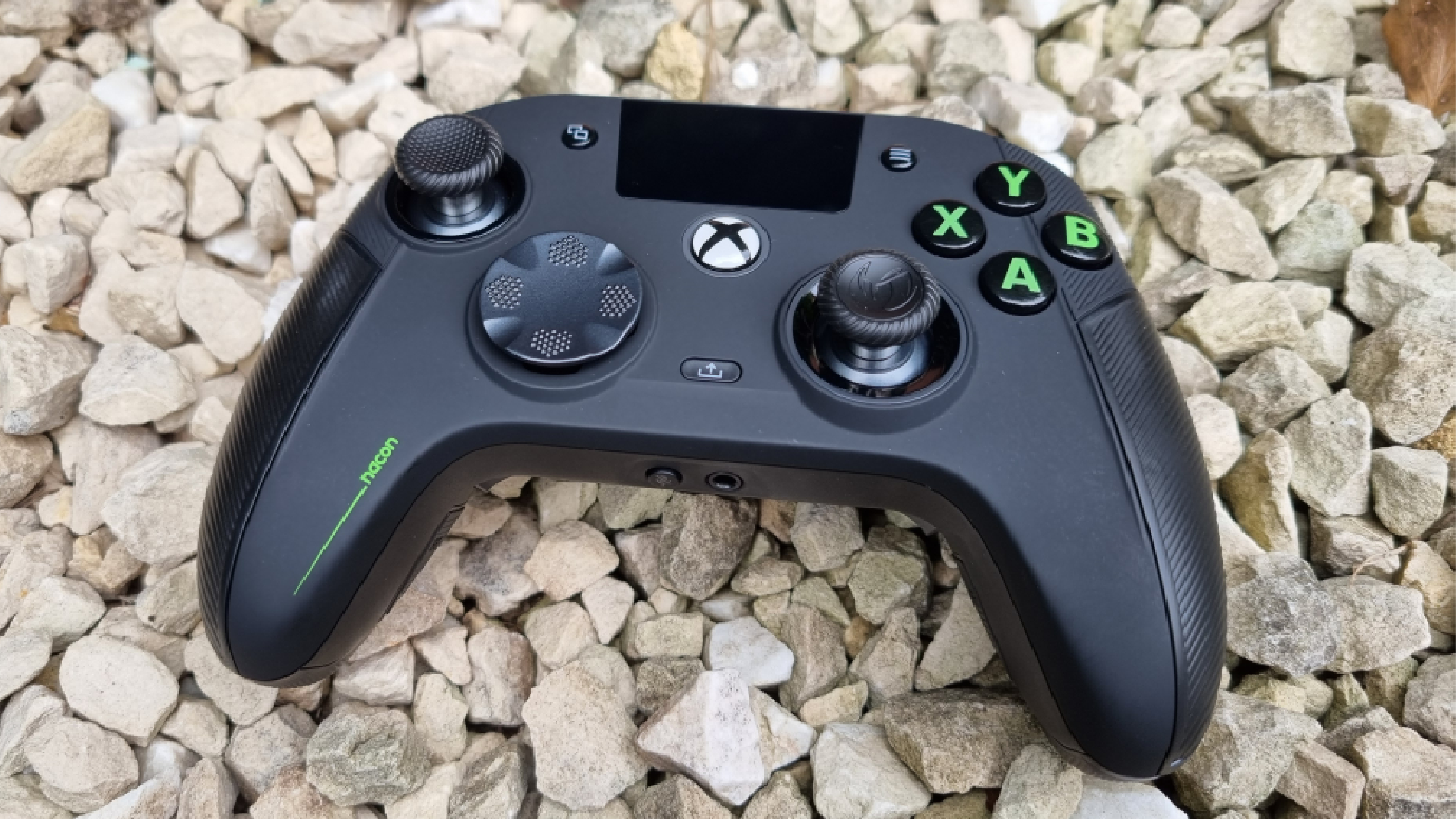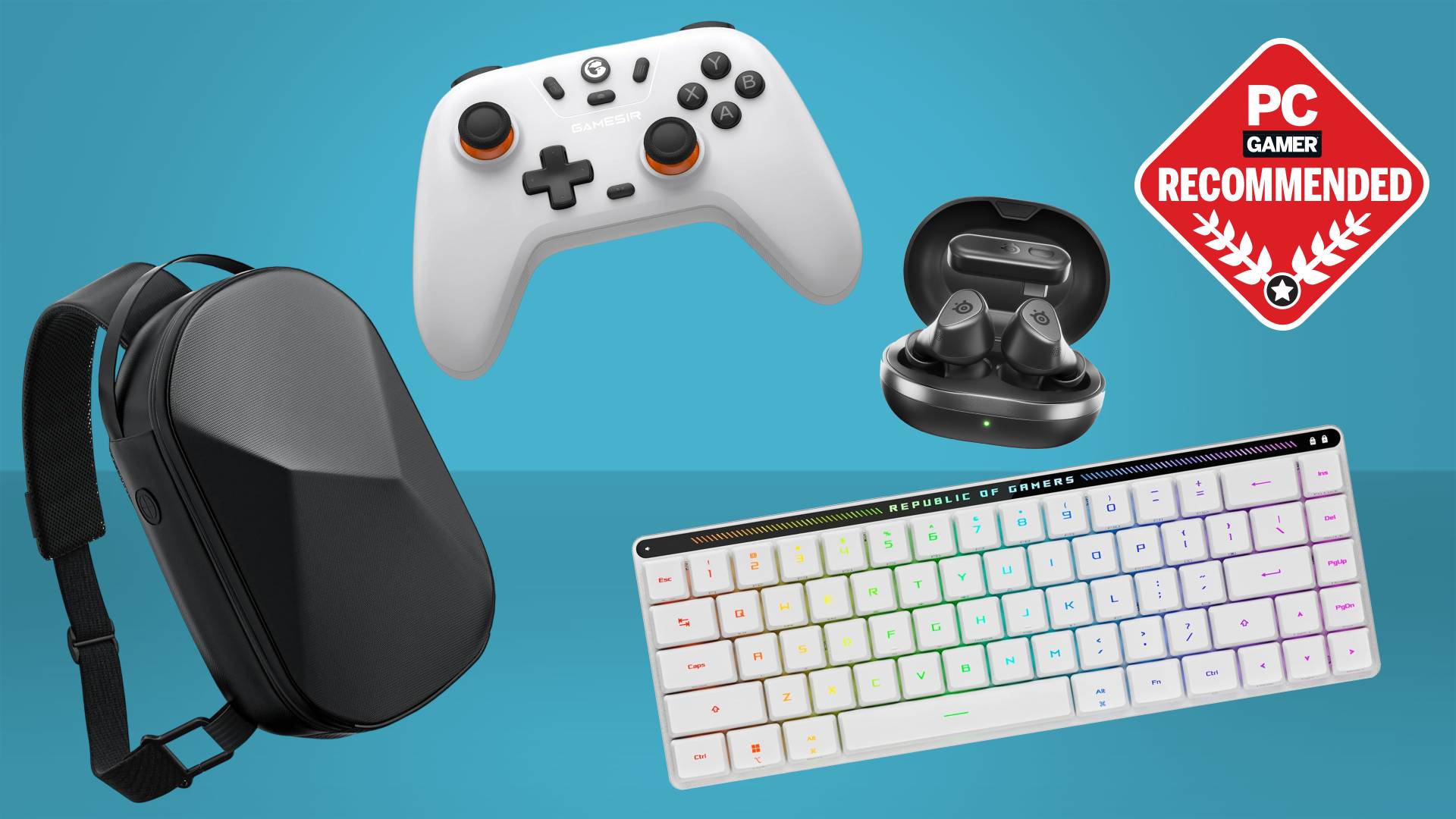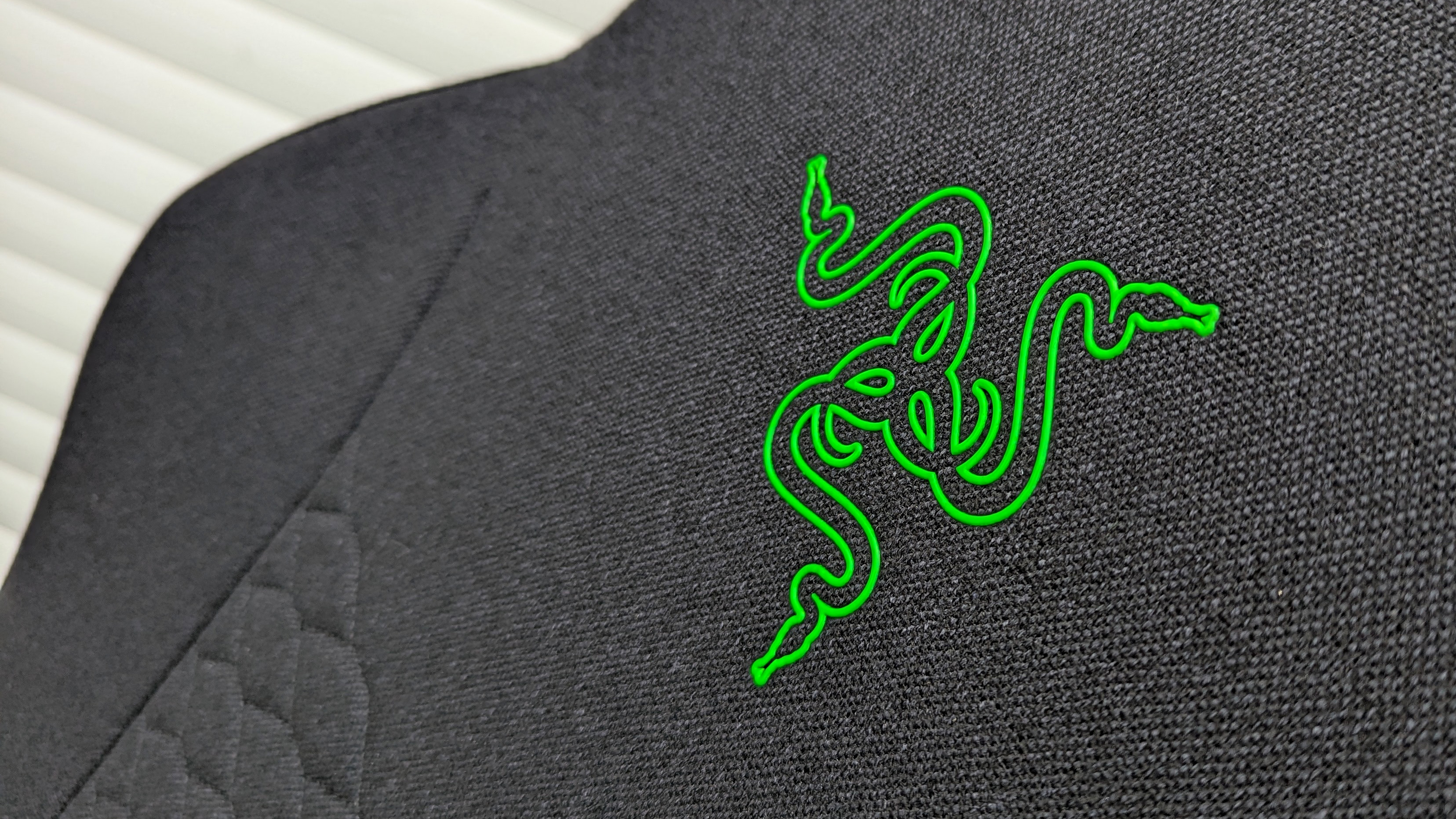Our Verdict
While the Revolution X Unlimited allows for a dizzying amount of customisation, the experience as a whole feels over-engineered to the point of frustration. It's certainly a great performer, and for that it deserves praise—but I can't help but feel it should have been taken back to the drawing board for a much-needed dose of refinement somewhere along the way.
For
- Excellent triggers
- Lots of customisation options
- Simple thumbstick swapping and weight addition system
- Positive, clicky d-pad
Against
- Overcomplicated controls and software
- Fingerprint-prone finish
- Rear buttons difficult to use
- Expensive
PC Gamer's got your back
Gosh, controllers are becoming complicated these days, aren't they? It seems like it wasn't that long ago that the majority of gaming controllers gave you a small smattering of face buttons, a couple of triggers, and the odd thumbstick to keep track of. Now, however, we're starting to see premium options become the norm, covered in paddles, extra buttons, screens, and enough features to make your head spin.
The Nacon Revolution X Unlimited takes this principle to the absolute extreme. Not satisfied with being merely a device to connect your hands to your games with a decent turn of speed, its designers appear to have thrown the kitchen sink at it—which may be just as well given its $200/£180 price tag. That puts the Nacon firmly at the premium end of the market, and there are some big fish swimming in those particular waters.
Beyond the standard asymmetrical Xbox layout, the Revolution X Unlimited also throws in four rear buttons, two extra shoulder buttons, and a three-way toggle switch on the rear to swap between wired, Bluetooth, and 2.4 GHz wireless connections.
Flanked either side are buttons to swap onboard profiles, another switch to swap between Advanced and Classic modes, and two toggles to individually swap the triggers between full range of motion and clicky, locked configurations. Oh, and there's a sizable colour display on the front to help you navigate all those potential options underneath your fingertips.
And I haven't even got to the customisation options yet. Inside the oversized carrying case is a small grey box containing six swappable thumbstick heads, six swappable internal weights, four metal joystick rings, and an extra d-pad. You also get a charging stand, a dongle for the 2.4 GHz connection, and of course, a USB Type-C to Type-A cable to connect the two.
Phew. As specs sheets go, the Nacon's is downright dizzying. Things are further complicated by the Revolution X software suite, a downloadable app that insists on launching itself in focus-stealing full-screen mode for reasons I can't quite fathom.
In order to set up and update the controller within the software, you need to select wired mode and advanced mode with their respective rear toggles, then connect the cable, turn on the controller with the Xbox button on the front, and hold down another button between the triggers for three seconds, all before you get to a single useful menu.
"But Nacon Revolution X Unlimited", I find myself exclaiming out loud. "I just want to play my games."
With the controller set to Classic mode you can switch between twelve control profiles without interacting with the software at all—but in Advanced mode, the world's your oyster when it comes to switching between eight custom-tuned profiles (four for Xbox, four for PC) that allow you to configure the Revolution Unlimited X exactly the way you want.
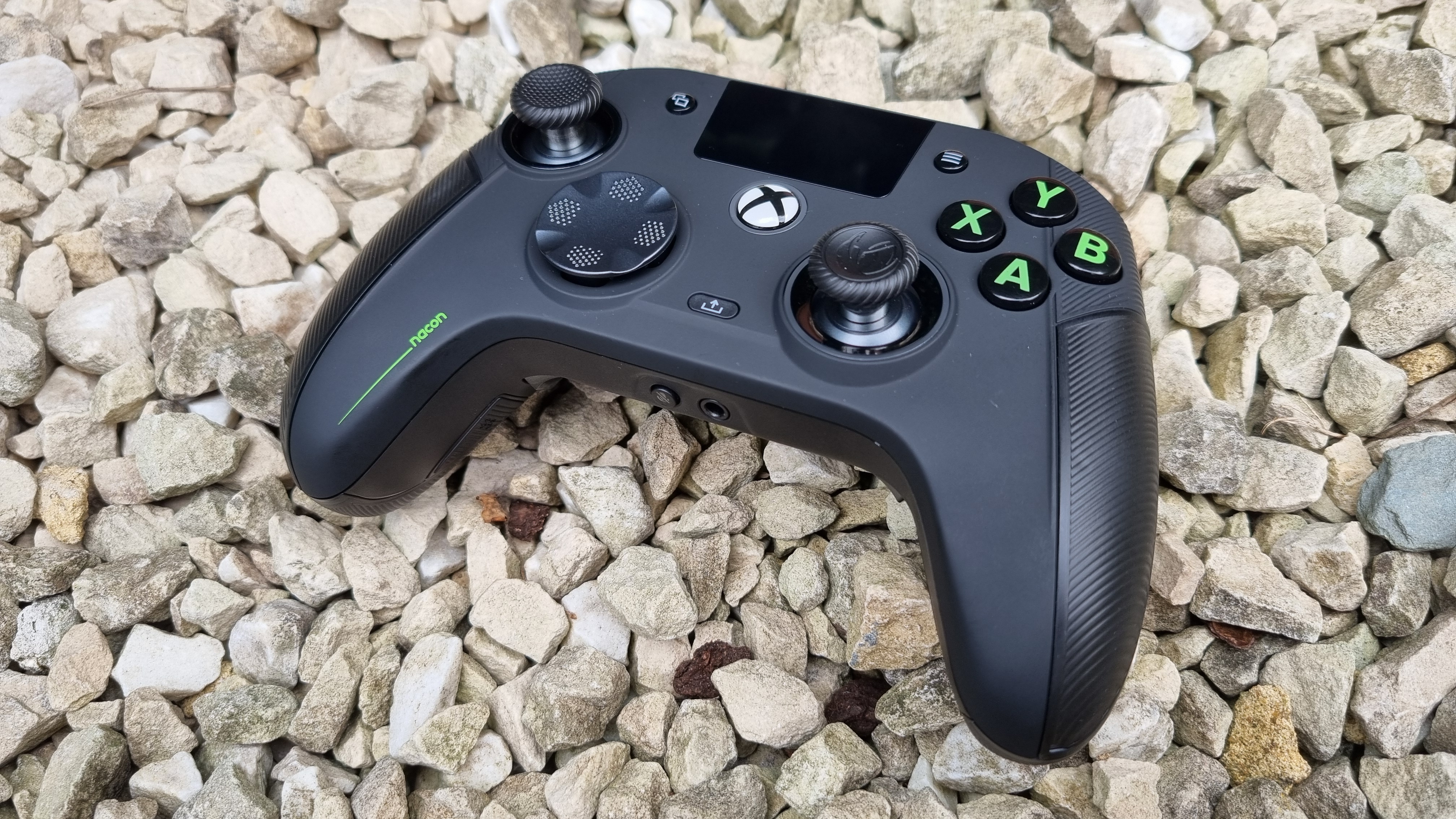

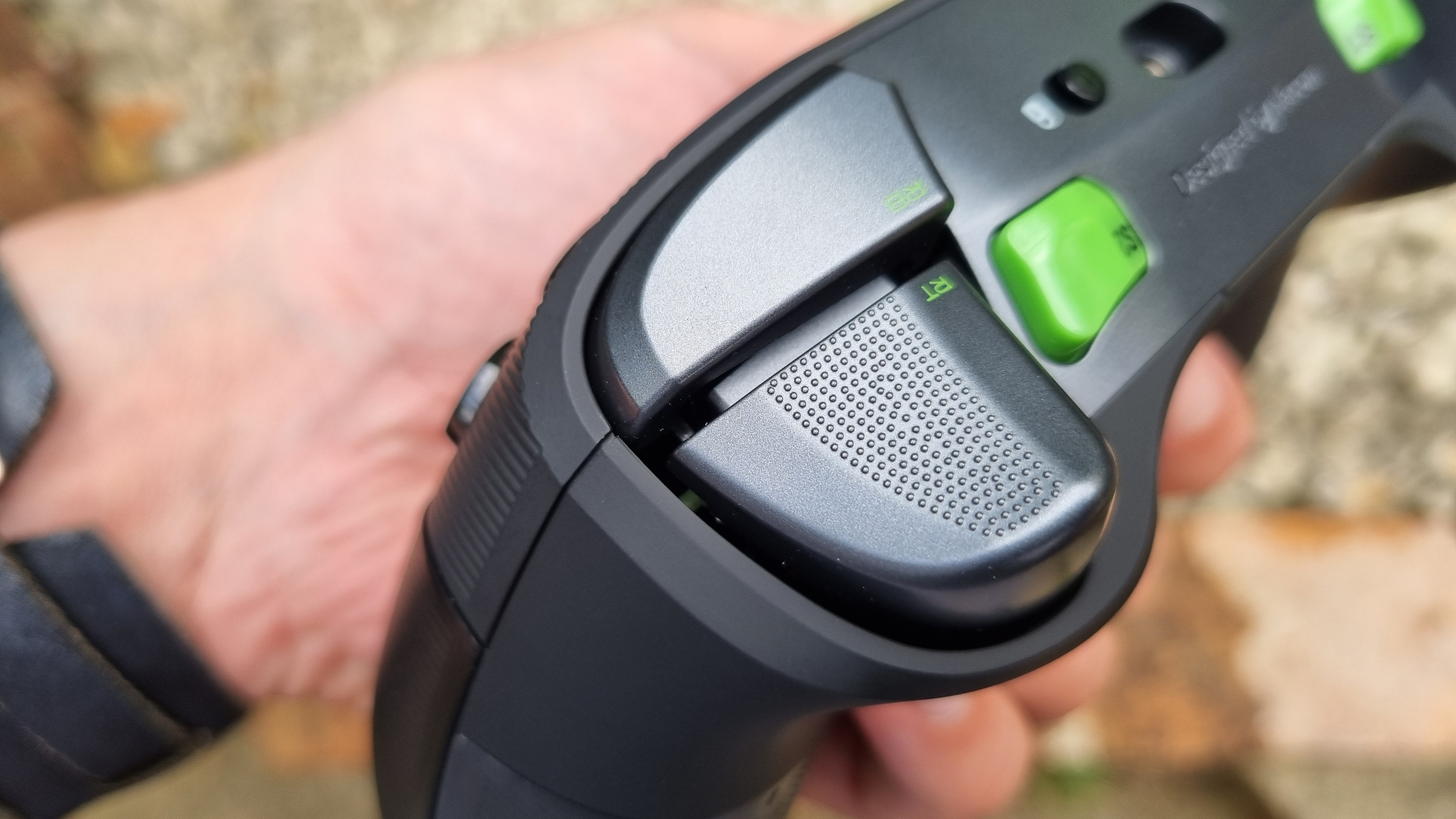


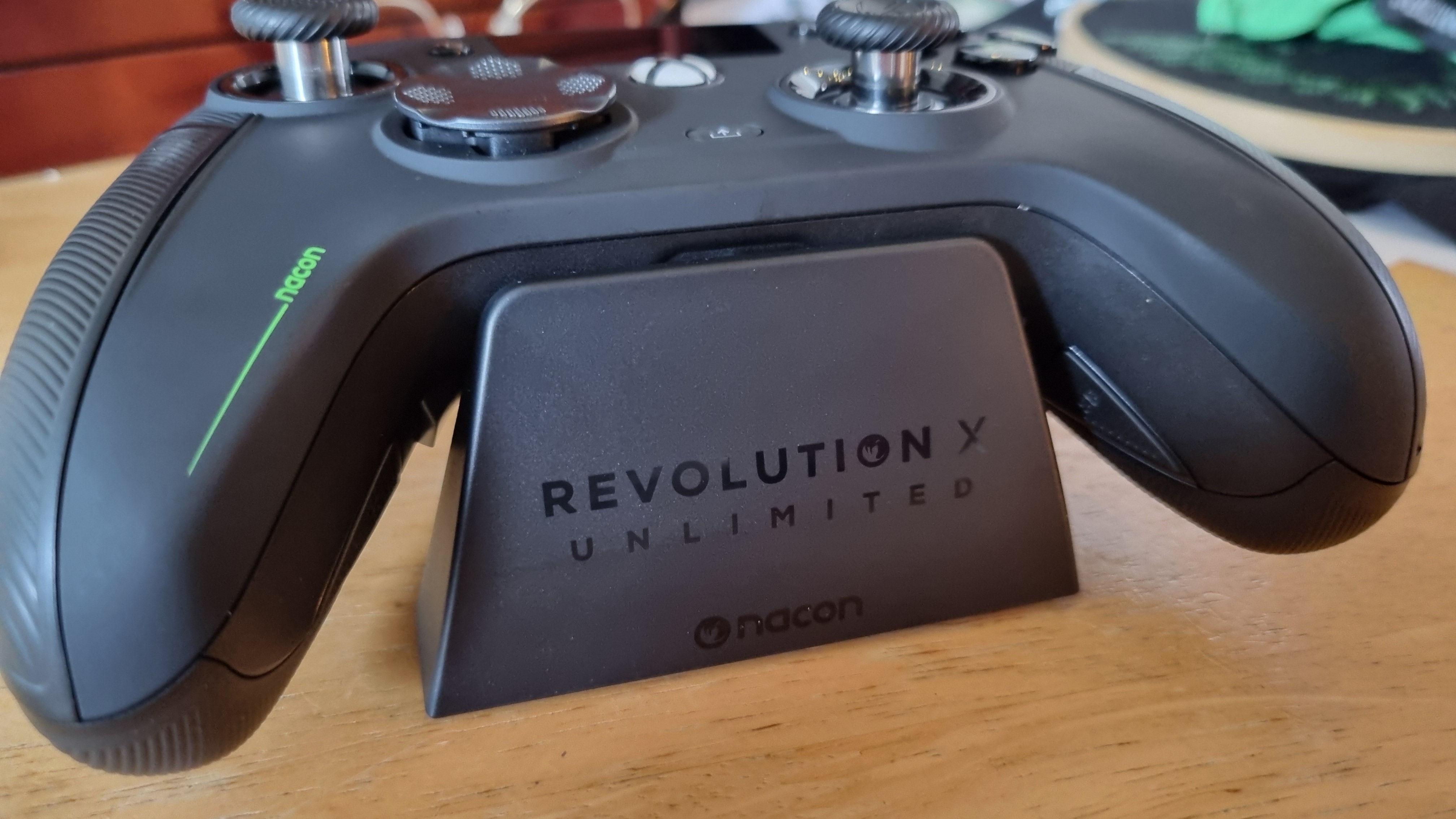
However, you need to physically plug the controller in and go through the aforementioned connection dance to edit profiles, then upload them for switching in wireless mode. What this means in practice is, you configure the controller the way you think you might want it when it's physically connected to your PC, and save it as a profile, then switch it to wireless mode and jump into a game.
Want to change something that isn't already in a profile? Stick it back in wired and advanced mode with the rear toggles, plug it in, boot it up, and hold down the button on top for three seconds once more. Make your changes, save the profile to the controller, then unplug it, switch it back to wireless mode, and go back to your game. Rinse and repeat until you find the exact configuration you require.
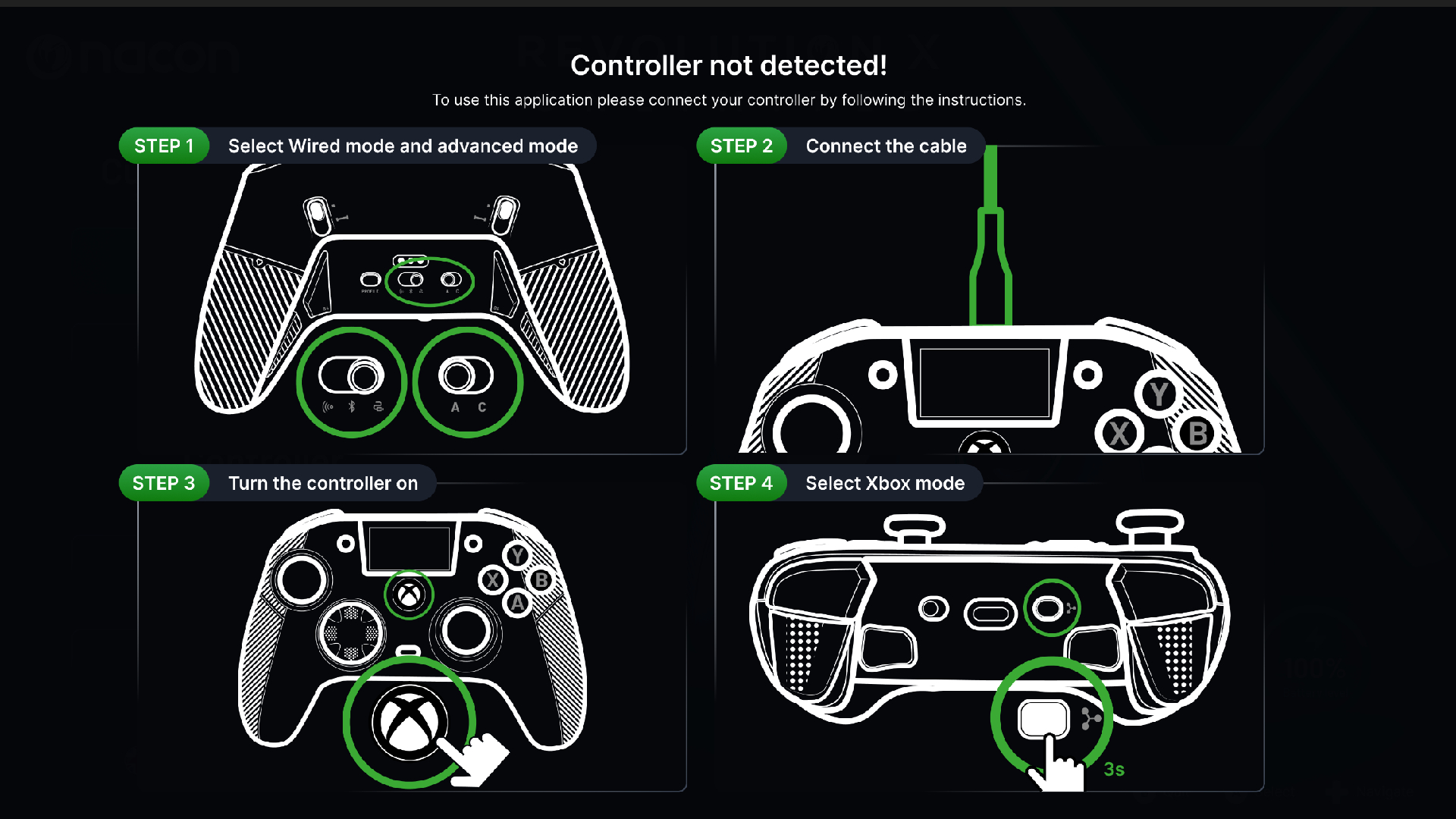

You could keep the Revolution X Ultimate in Classic mode (or wired) to avoid this tedious process, of course, but what you're paying for here is customisation—and while the Nacon provides a boat-load of it, it's frustrating enough to configure on the fly that I almost wish it didn't.
One feature worth paying attention to, however, is the Communication Speed button. This allows you to adjust the latency between three modes: Normal provides 4 ms wired and wireless latency, Reactive drops it down to 2 ms for both, and Boosted Wired mode drops the wired connection to 1 ms of latency overall.
Six swappable thumbstick heads, six weights (10-16 g), four metal joystick rings, two d-pads, charging stand, latency adjustment, 12 Classic mode profiles (four for Xbox, four PC, four Bluetooth), eight Advanced mode profiles (four Xbox, four PC & Bluetooth), built-in display, gyroscopic aiming, carrying case, RGB-lit right thumbstick ring.
I can't say I've ever noticed perceptible latency from a standard 2.4 GHz wireless controller (although I certainly have from Bluetooth-connected ones), but the Nacon's wealth of customisation options and extra features makes it feel like it isn't meant for mere mortals like me.
I'd wager it's for the esportists, the min/maxers, the pro gamers that put the rest of us to shame in the online rankings. If you're one of those, you may jump for joy at all the extra options here, but for those of us who want to do a bit of mild tweaking for certain games, it sure makes for a complicated adjustment process.
And that's before you start making use of all those extra components. Here, the Nacon is actually quite cleverly designed. Changing thumbstick heads is as simple as pulling the old ones off and clicking new ones on, whereas the weights can be added into the rear of the grips underneath some simple sliding covers.
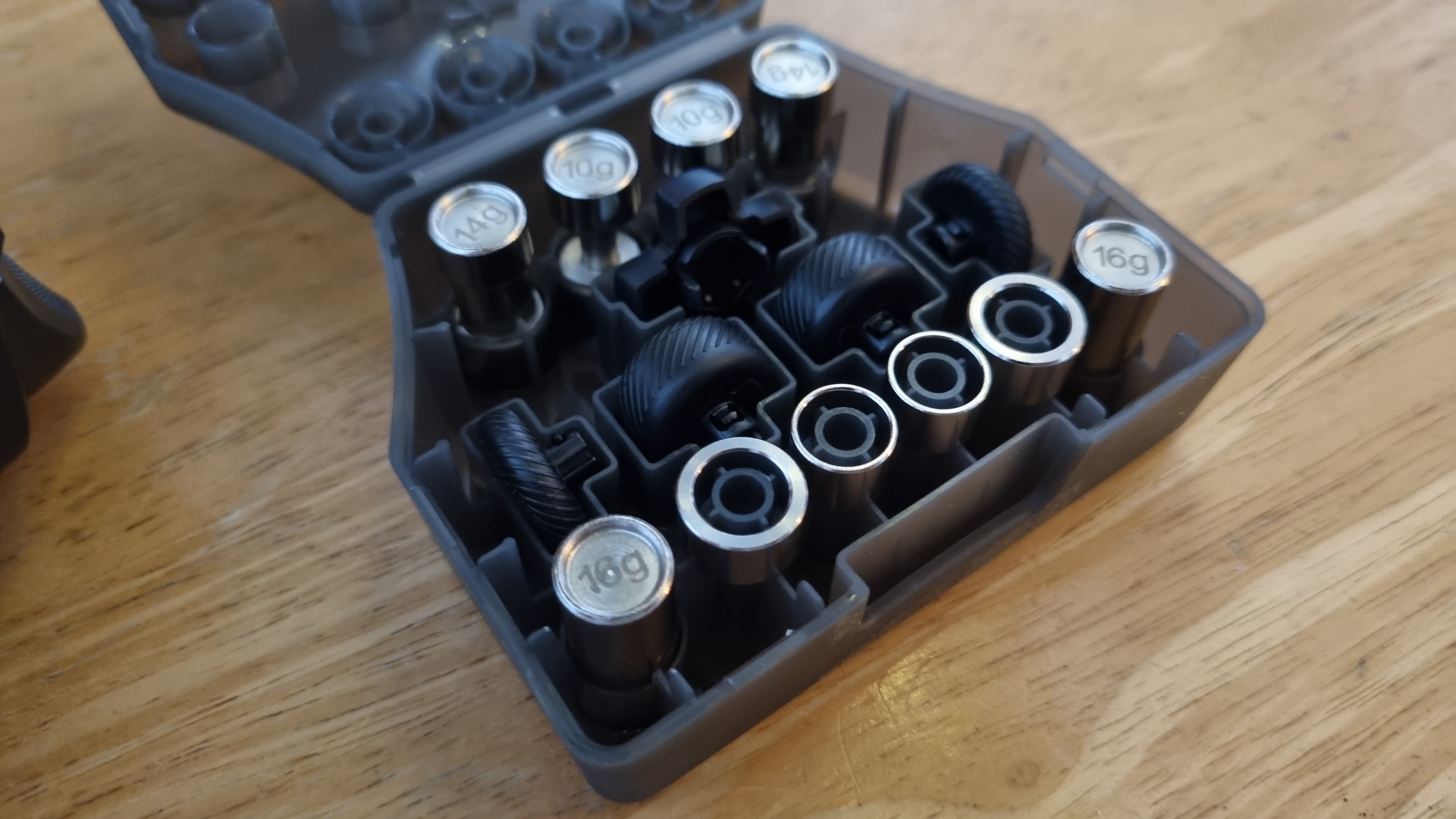

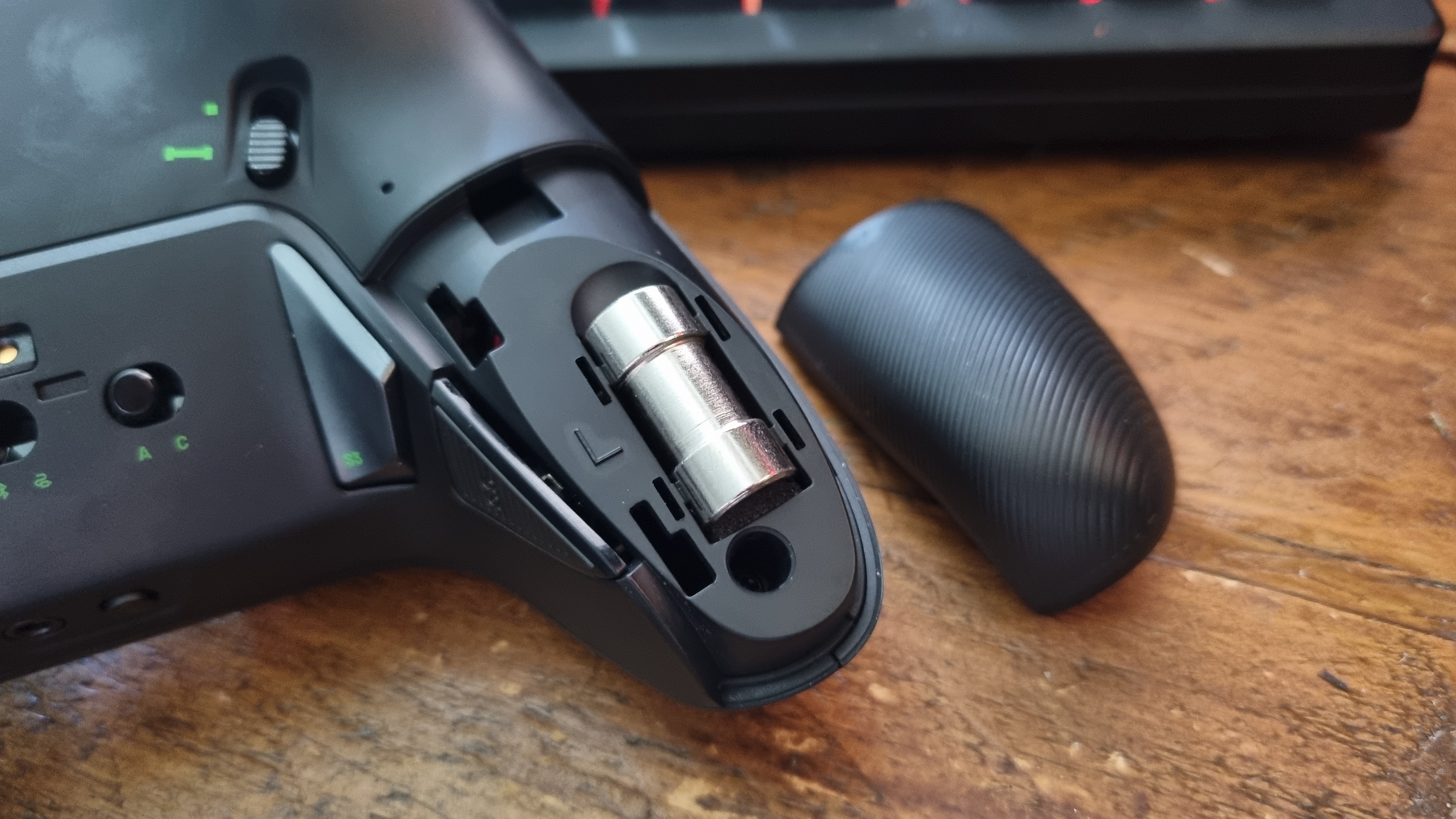
I'd already broken out my screwdriver set in anticipation of a fiddly process, given my experience with the software—but it's refreshingly easy to adjust physical aspects of the controller itself.
Which brings me on to the most important thing about any gaming peripheral: How it feels in the hands. The Revolution Unlimited X is a chonky affair, a thickly set controller with sizable hand grips and oversized face buttons. My spider-like hands fit quite nicely, but my smaller-handed partner finds it uncomfortable to use due to its thickness. Your mileage will vary here, of course, but if you've got smaller mitts I'd say it's probably not the ideal choice.
Premium controllers may be becoming more complicated these days in general, but to my mind, the Revolution X represents a step too far
While we're on ergonomics, I'm not a fan of the rear grip buttons. The top two (activated by your ring fingers) are slightly sculpted to meet the internal curvature of your digits, but the bottom two sit almost flush to the grips, making them difficult to find in the heat of battle.
More than once I've found my pinky fingers hunting for the right spot to press them, which in turn means I shy away from using them for important functions in general. They're present, but as far as my particular hands go, not particularly usable.

The face buttons themselves are larger and flatter than the standard domed affairs you'll find on most controllers, which takes a little getting used to. The switches underneath are of the clicky variety, but feel slightly thin. They're speedy enough to use, but not particularly satisfying to click.
I'm also not keen on the finish of the controller overall. Large parts of the chassis appear to have been coated in a thin layer of what I can only describe as "dusky film", which is incredibly prone to picking up fingerprints. I also managed to scuff mine slightly by gently removing the protective film over the central screen, which doesn't bode well for its durability over time.
I believe the matte, dusky finish may be there to enhance the grip of the controller body, which it does well—but I can't say it's particularly pleasant feeling, and it looks pretty grim after a long session covered in hand sweat and grease.
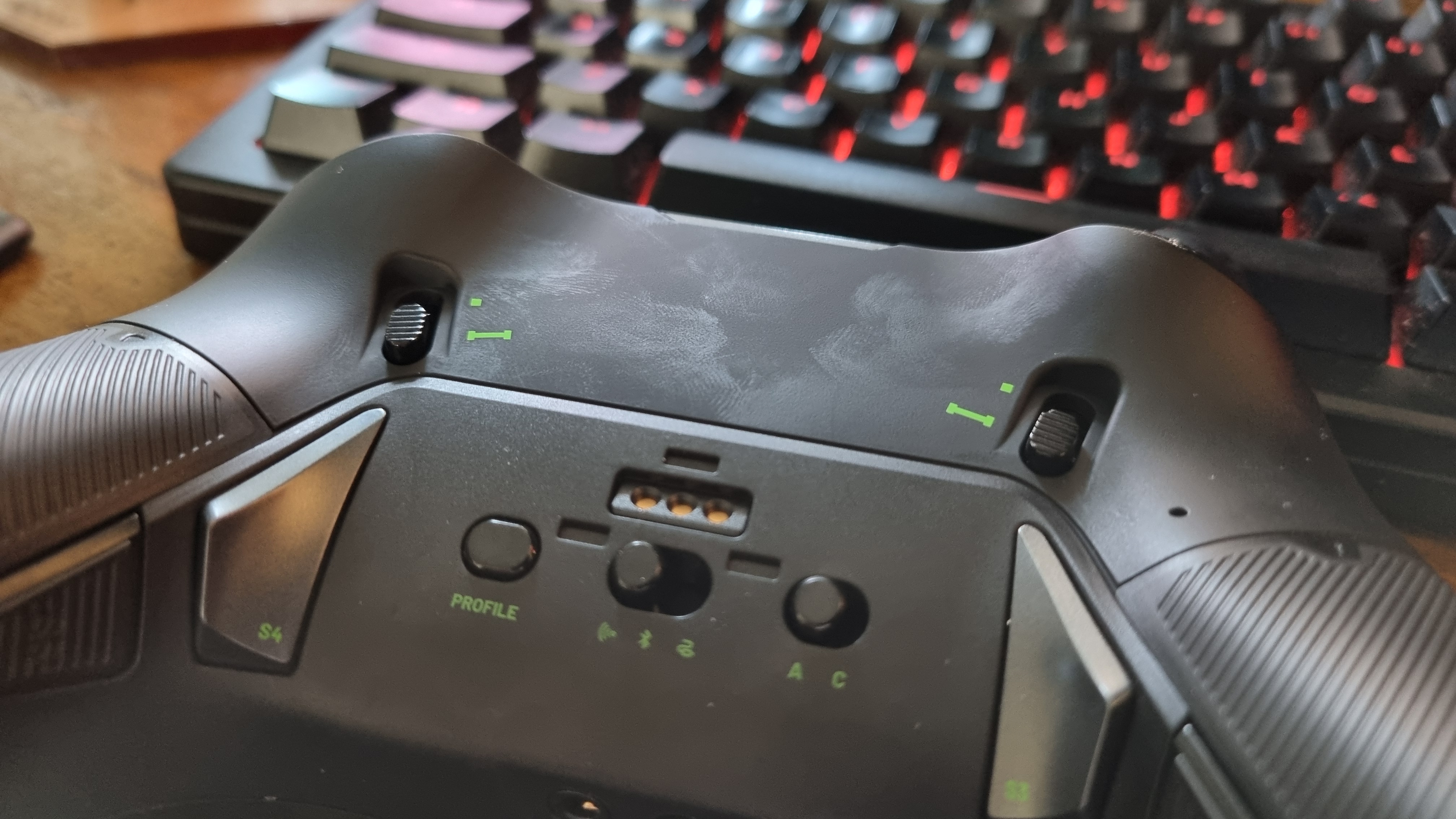
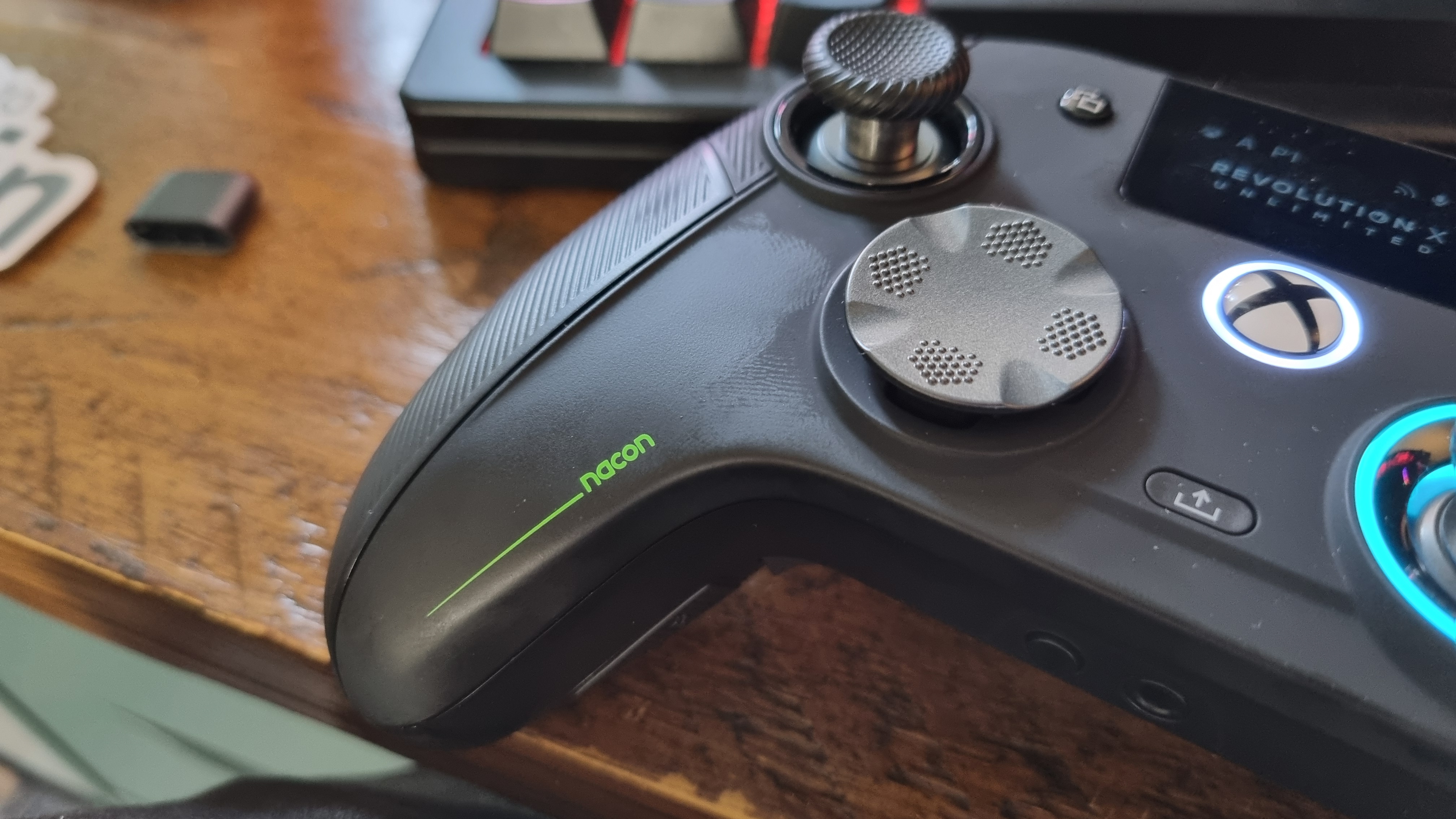
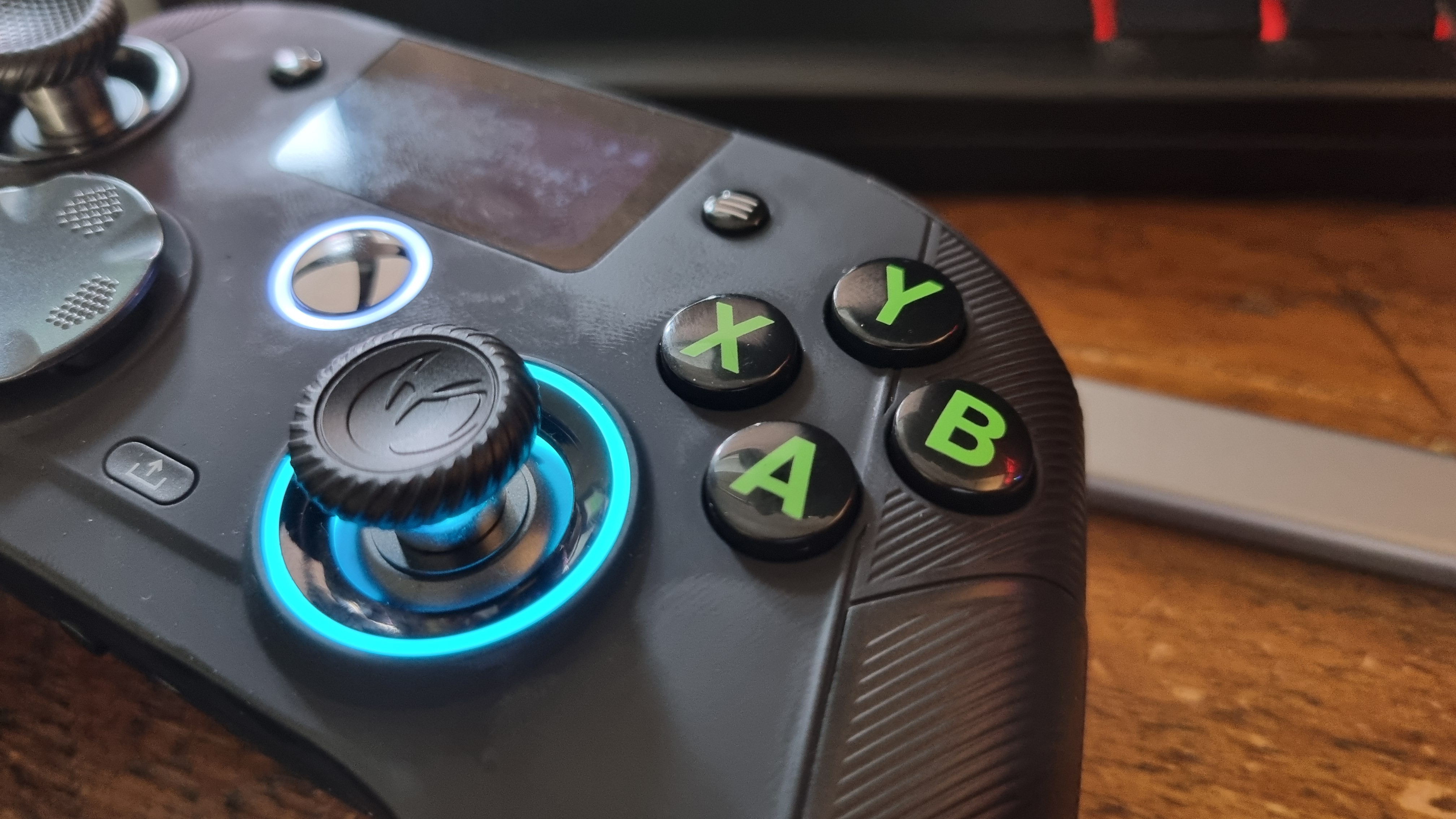
There are plenty of things the Revolution X does well, though, and it comes down to the basics. The triggers, for example, have a lovely weight to them that makes them very satisfying to use, and the physical toggle between full range and quick click actions works well in practice. The Hall effect thumbsticks also feel precise, smooth, and plenty fast, which combined with the low latency response, makes for a very speedy-feeling input device. As much as my ageing reflexes can tell, anyway.
The d-pad, too, is gloriously clicky and precise. In fact, the Revolution Unlimited X gets enough of the basics right, it makes its fundamental flaws all the more obvious.
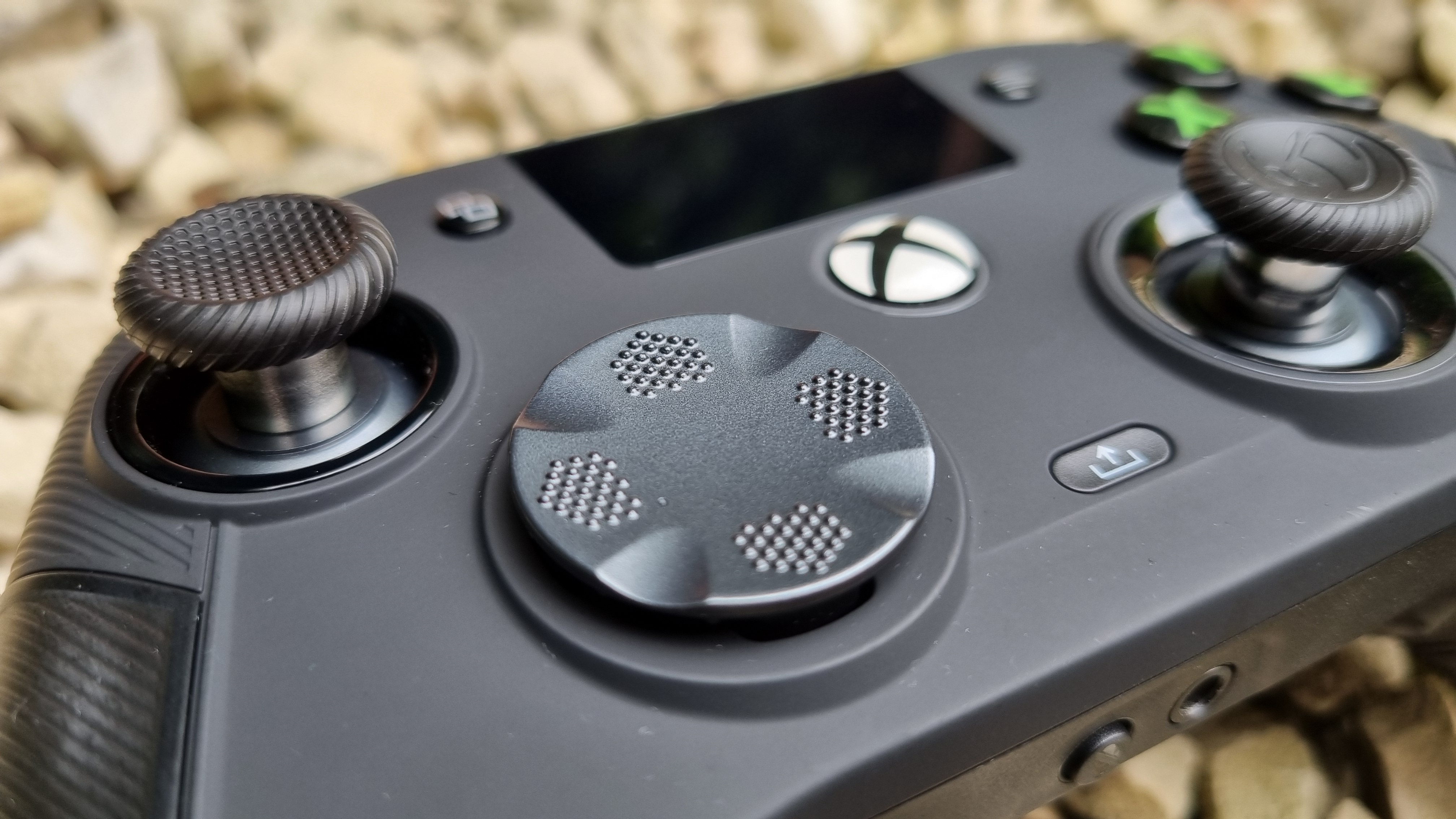

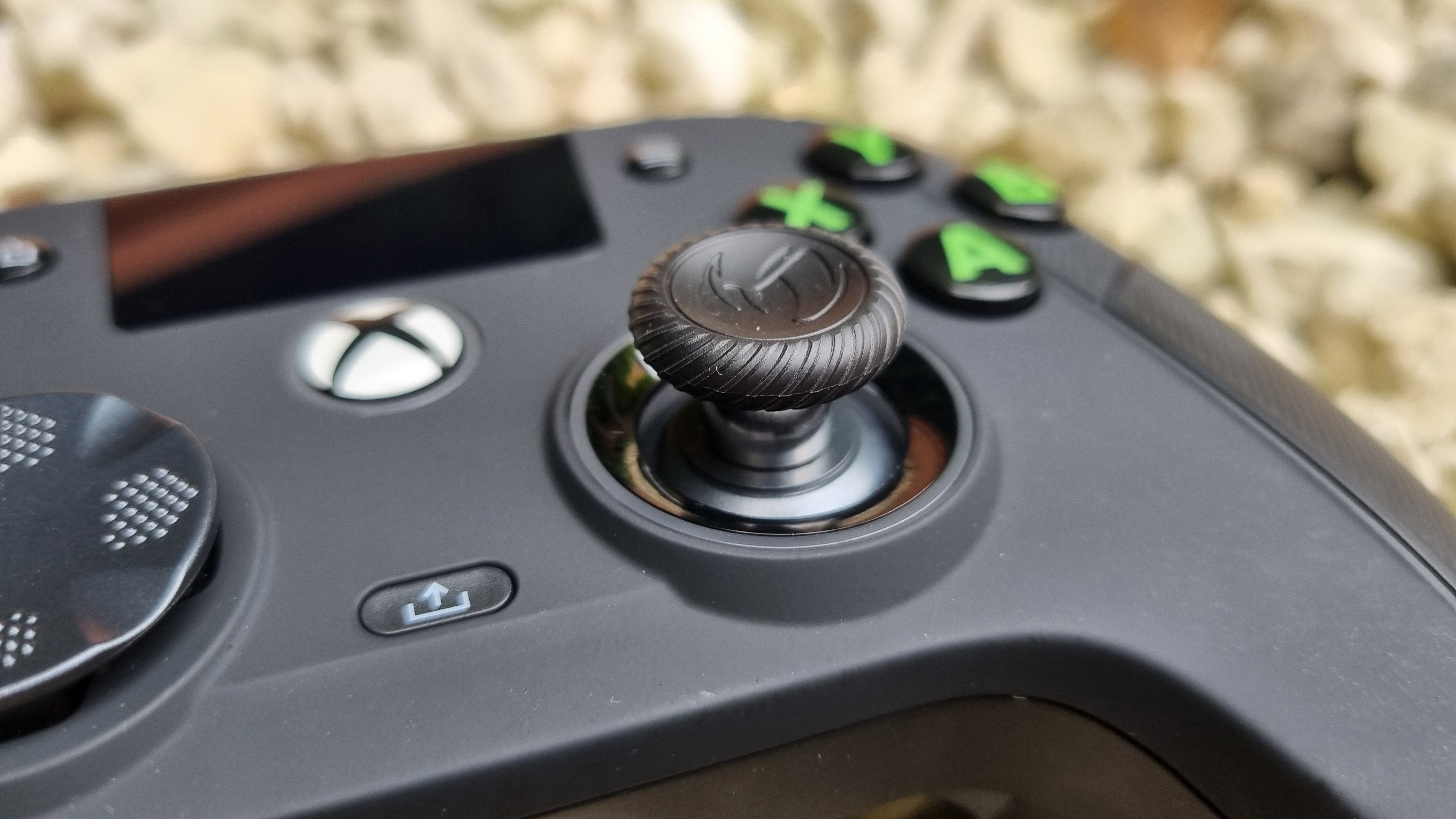
This is a controller that, in my humble opinion, should have been reigned back somewhere in the design process. It's so covered in ideas, so splattered with customisation options, that I can't help but feel if it had instead chosen to focus on executing a few ideas well—rather than many, many ideas with varying levels of success—it'd be all the better for it.
Whether you want one is likely to come down to how underserved you feel by something basic, like the standard Xbox Wireless controller. It's something of a design classic at this point, and has become so sharply defined, so well-iterated over its various releases, that using one next to the Nacon feels like a breath of fresh air.
✅ You want as much customisation as possible: You really can make the Nacon do just about anything short of make the tea. If you're prepared to do a fair bit of fiddling, that is.
✅You want great triggers and thumbstick feel: For such a fussy beast, the Revolution X Unlimited gets a few of the basic things very right indeed.
❌ You want a straightforward experience: While the customisation options are legion, configuring them is so obtuse I found myself avoiding many possible configurations to save the hassle.
❌ You're on a budget: Unless ultimate customisation is your goal, your money can be better spent on something with fewer features, but more refinement.
And I have to mention the price. The Xbox Wireless controller is quite literally a quarter of the cash, and delivers such a hefty dose of everything you want and nothing you don't that I struggle to see how the Revolution Unlimited X is worth four times more—much as it tries to throw the kitchen sink at you for your cash.
There's another fly in the Nacon's ointment, too, and it comes in the form of the Razer Wolverine V3 Pro. It's also a $200 controller with rear paddles, dual-function triggers, Hall effect sticks and a clicky d-pad. However, as something to hold in your hands, configure, and use every day, it feels like a much more premium object.
There's something understated and meticulously refined about the Razer in the way its extra functionality is integrated, and that refinement is sorely lacking in many aspects of the Nacon equivalent. Plus, you can Alt-Tab out of a game in wireless mode, adjust a setting, and leap back in seamlessly, which feels like a blessed relief after trying to customise the Nacon on PC.
Call me old-fashioned if you like, but if I'm going to spend $200 on a gaming controller, I want it to woo me, to show me where I've spent my money—and I want that to be reflected in the refinement of the experience, not in how many features it can cram into its frame.
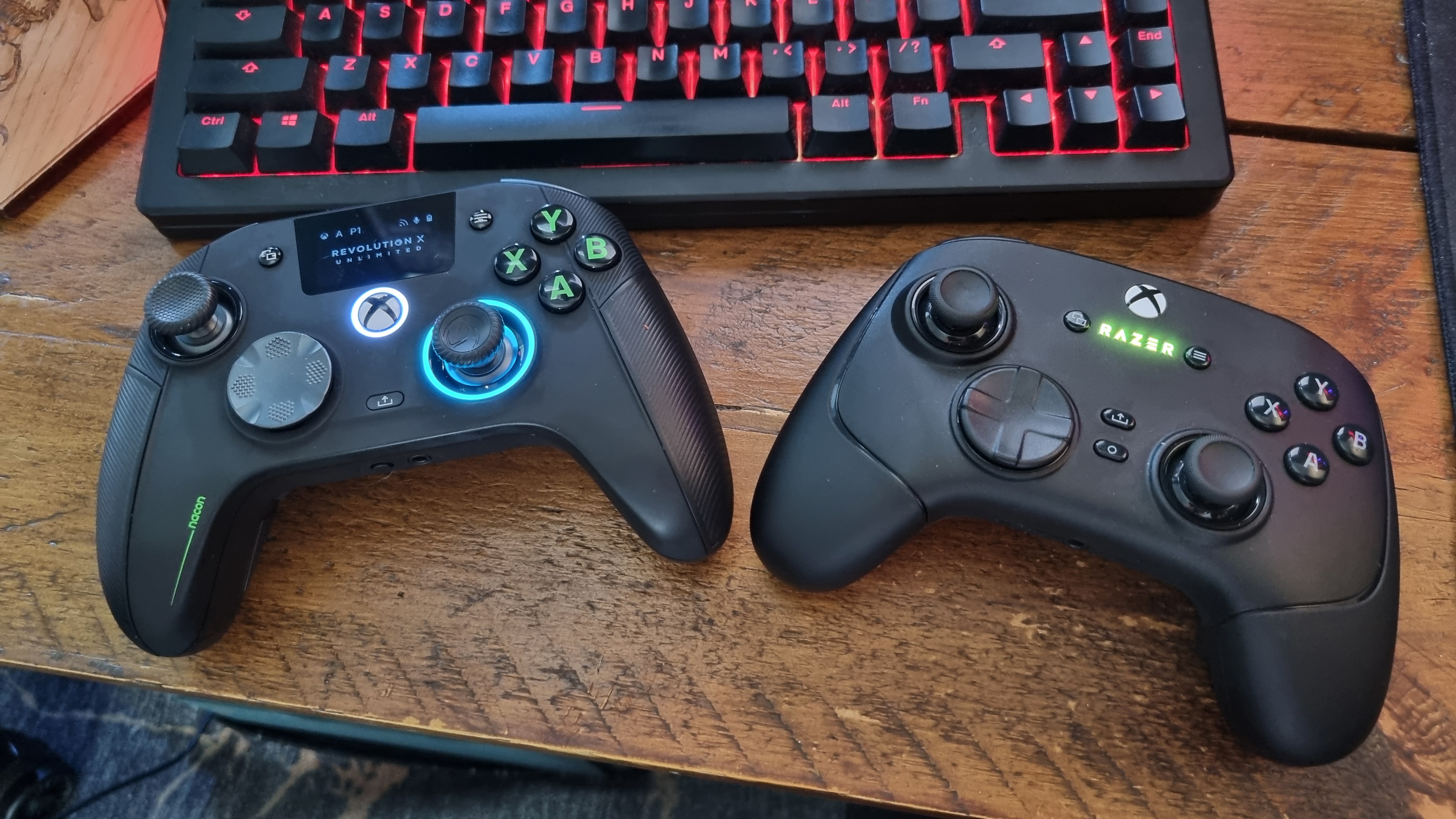
Sure, the Razer doesn't have a screen, but how many of us realistically want to spend our time doing battle with the menus, rather than simply letting a controller get on with the business of being an intuitive, great-feeling thing to hold in our hands while we game?
The Nacon Revolution X Unlimited is an admirable attempt to deliver as much functionality as possible to your fingertips, but it takes it to such an extreme that it ends up feeling fussy, overly complicated, and more than a little frustrating to get the most out of.
Premium controllers may be becoming more complicated these days in general, but to my mind, the Revolution X represents a step too far—albeit perhaps in the right direction. It's sometimes said that a camel is a horse designed by committee, but in this case, the Nacon controller has left me with a slight, but difficult-to-ignore, hump.
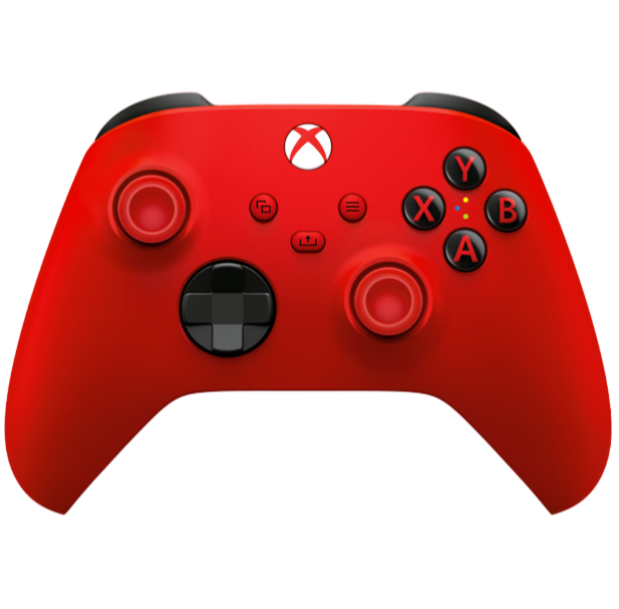
1. Best overall: Xbox Wireless Controller
2. Best budget: GameSir Nova Lite
3. Best premium: Xbox Elite Series 2
4. Best customizable: Scuf Instinct Pro
5. Best haptics: Sony DualSense
6. Best Hall effect: Razer Wolverine V3 Pro
While the Revolution X Unlimited allows for a dizzying amount of customisation, the experience as a whole feels over-engineered to the point of frustration. It's certainly a great performer, and for that it deserves praise—but I can't help but feel it should have been taken back to the drawing board for a much-needed dose of refinement somewhere along the way.

Andy built his first gaming PC at the tender age of 12, when IDE cables were a thing and high resolution wasn't—and he hasn't stopped since. Now working as a hardware writer for PC Gamer, Andy's been jumping around the world attending product launches and trade shows, all the while reviewing every bit of PC hardware he can get his hands on. You name it, if it's interesting hardware he'll write words about it, with opinions and everything.
You must confirm your public display name before commenting
Please logout and then login again, you will then be prompted to enter your display name.
